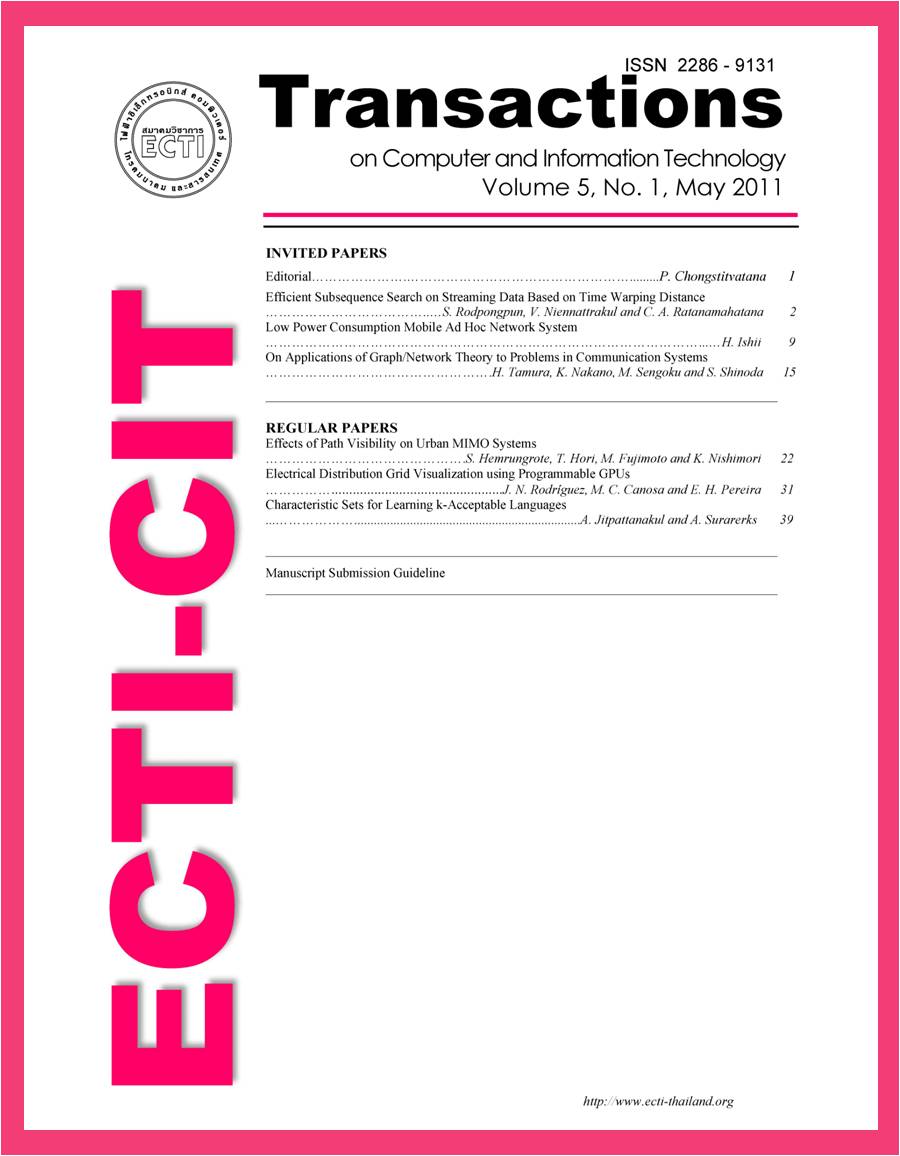Efficient Subsequence Search on Streaming Data Based on Time Warping Distance
Main Article Content
Abstract
Many algorithms have been proposed to deal with subsequence similarity search problem in time series data stream. Dynamic Time Warping (DTW), which has been accepted as the best distance measure in time series similarity search, has been used in many research works. SPRING and its variance were proposed to solve such problem by mitigating the complexity of DTW. Unfortunately, these algorithms produce meaningless result since no normalization is taken into account before the distance calculation. Recently, GPUs and FPGAs were used in similarity search supporting subsequence normalization to reduce the computation complexity, but it is still far from practical use. In this work, we propose a novel Meaningful Subsequence Matching (MSM) algorithm which produces meaningful result in subsequence matching by considering global constraint, uniform scaling, and normalization. Our method significantly outperforms the existing algorithms in terms of both computational cost and accuracy.


